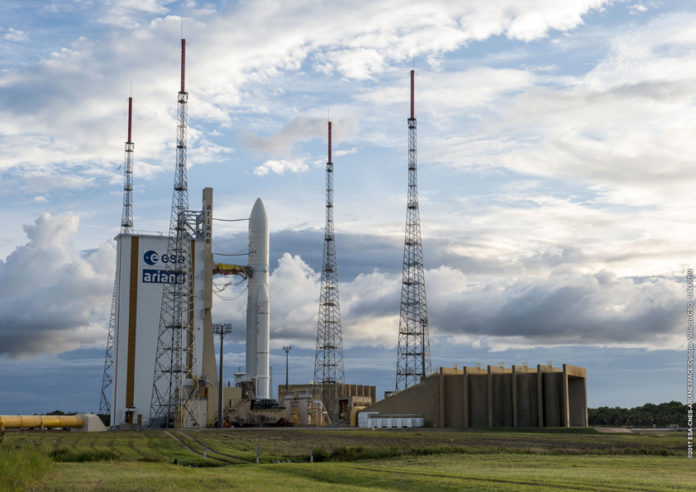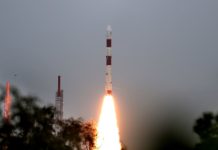On 28 June 2017 at 6:15 p.m. (local time), Arianespace’s heaviest launcher Ariane 5 launched two payloads into orbit from the Guiana Space Center (CSG), Europe’s Spaceport in French Guiana.
The first, Hellas Sat 3-Inmarsat S EAN, is a “condosat” owned by Hellas Sat Consortium and Inmarsat, who will share the satellite to service Europe, the Middle East and sub-Saharan Africa, as well as airline passengers for the International Airlines Group (IAG).
The second, the Indian Space Research Organisation’s (ISRO) GSAT-17, is the 21st satellite that Arianespace has launched for India, and the 7th satellite from the GSAT series.
The Launch
The launch is a significant one for Arianespace, marking its 80th successful launch in a row, and its 290th launch to date. It is also the seventh successful launch by Arianespace this year, and the fourth this year by its heavy lift launcher Ariane 5.
Broadcast live from French Guiana, the launch took a total of 41 minutes to place the two satellites into Geostationary Transfer Orbit (GTO), with a total payload lift performance of 10,136 kg. Separation of the upper stage payload, Hellas Sat 3-Inmarsat S EAN, took place at + 00H 28MN 17S, and separation of GSAT-17 occurred at + 00H 41MN 47S.
Hellas Sat 3-Inmarsat S EAN
Built by Thales Alenia Space, Hellas Sat 3-Inmarsat S EAN weighs an estimated 5,780 kg at liftoff, and is the fourth Thales Alenia satellite Arianespace has launched this year. It will operate from a 39-deg. East orbital slot.
The dual-payload satellite provides two services. The first payload, for Arabsat-owned Hellas Sat, will provide direct-to-home (DTH) TV broadcast and telecommunications services, as well as the distribution of high-definition (HD) and ultra-high definition (UHD) video content in Europe, the Middle East and sub-Saharan Africa.
The second, operated by Inmarsat, contains a relay payload to offer high-speed, high-capacity Wi-Fi connections for airline passengers. Inmarsat’s first customer is IAG, the sixth-largest airline group in the world, which has already begun equipping its aircraft to enable high-speed internet.
GSAT-17
ISRO’s and Arianespace’s relationship harks back to 1981, and the GSAT-17 marks the 21st satellite the company has launched for ISRO.
With a mass at liftoff of 3,476 kg, the satellite is an addition to ISRO’s current fleet of 17 telecommunications satellites; this is the second satellite from the GSAT family to be launched this month, the first being the GSAT-19 launched from ISRO’s GSLV Mark III on 5 June.
GSAT-17 will operate from a final orbital position of 93.5 deg. East, and will ensure connectivity of ISRO’s Fixed Satellite Services (FSS) in the C-bands, Mobile Satellite Services (MSS) in the S-band, and Data Relay and Search & Rescue services in UHF band.
Dr. K. Sivan, Director of ISRO’s Vikram Sarabhai Space Center, described this launch as “glorious,” and offered the Indian space organization’s “congratulations, complements and thanks to Arianespace for a wonderful job.”







